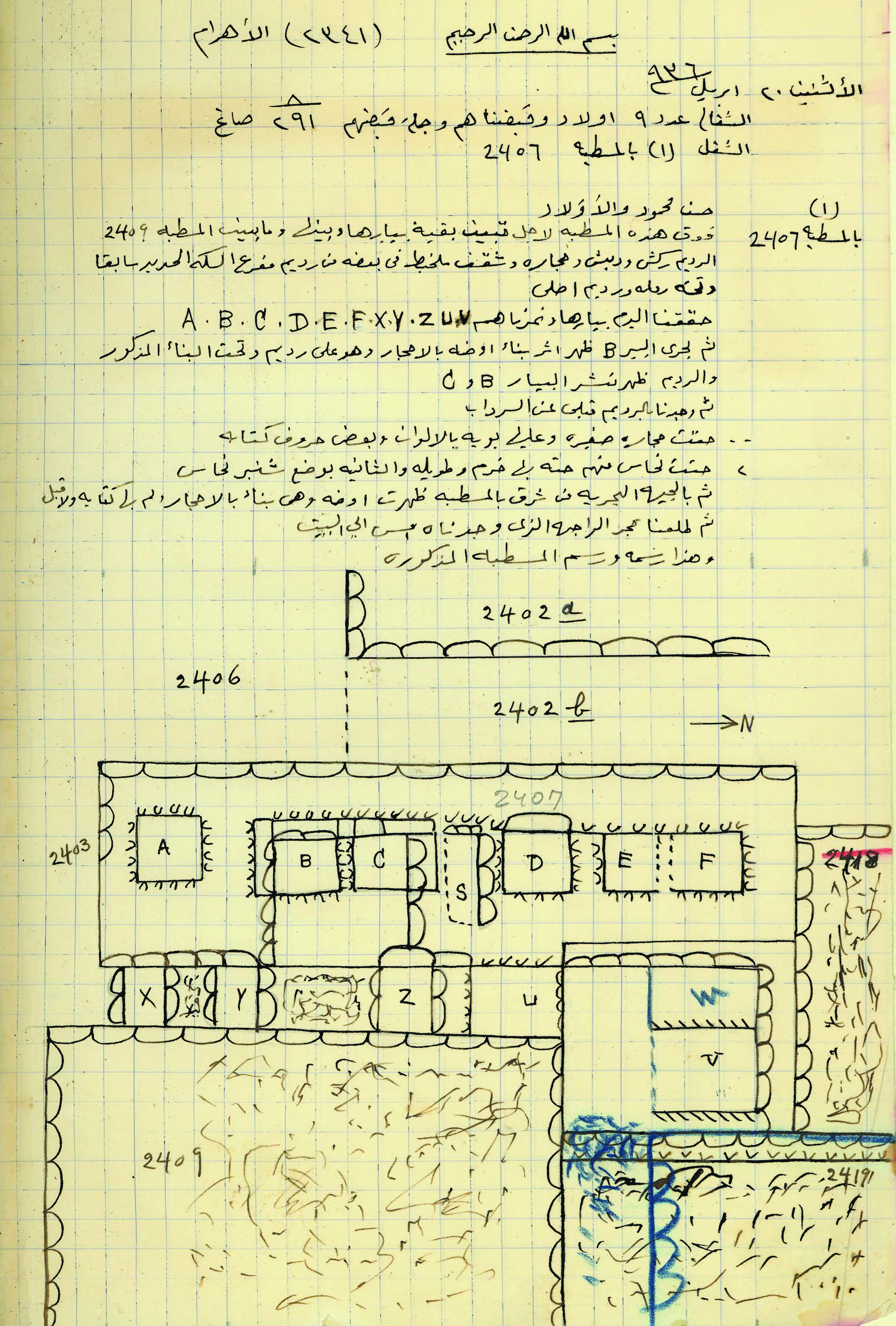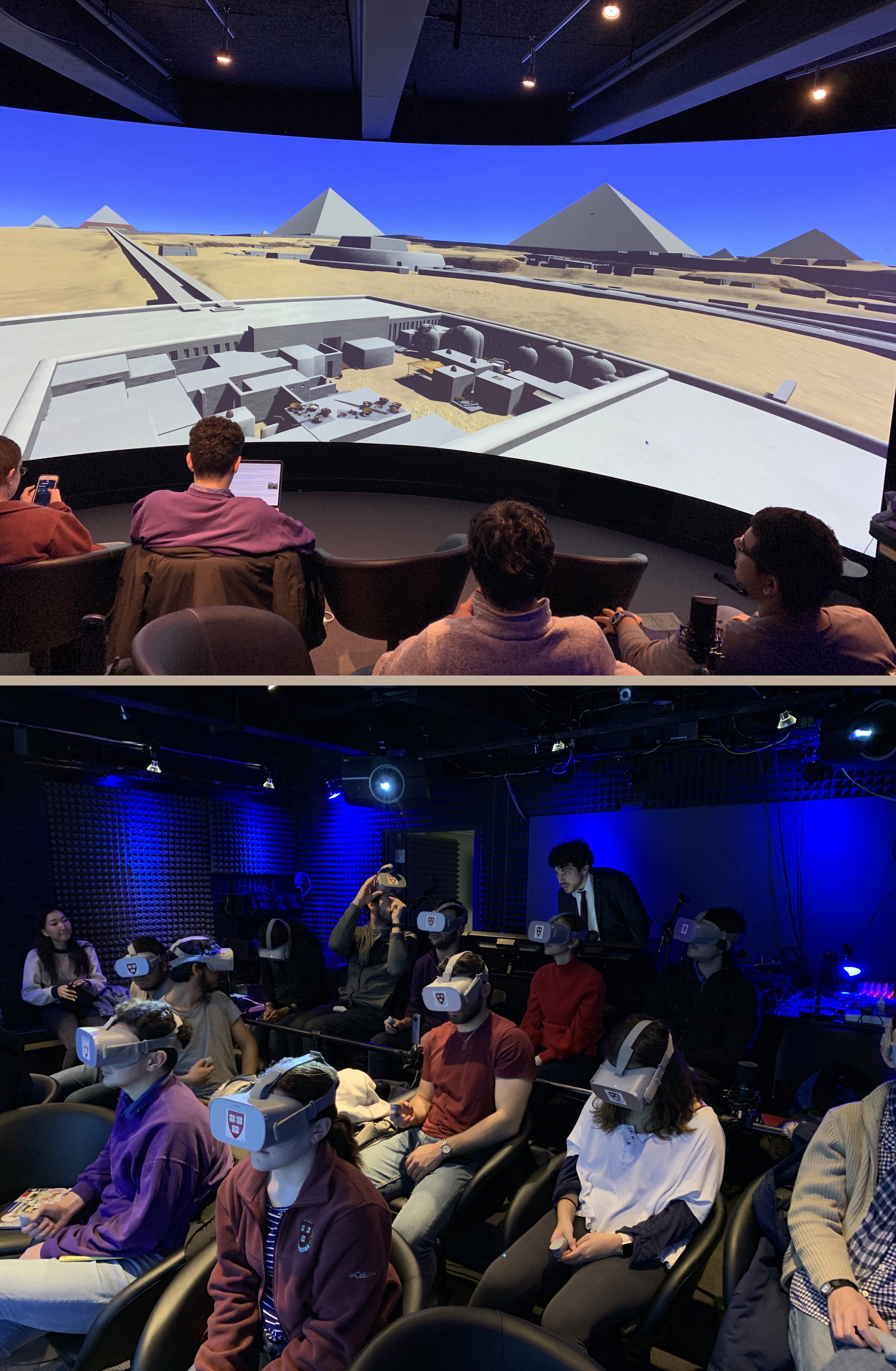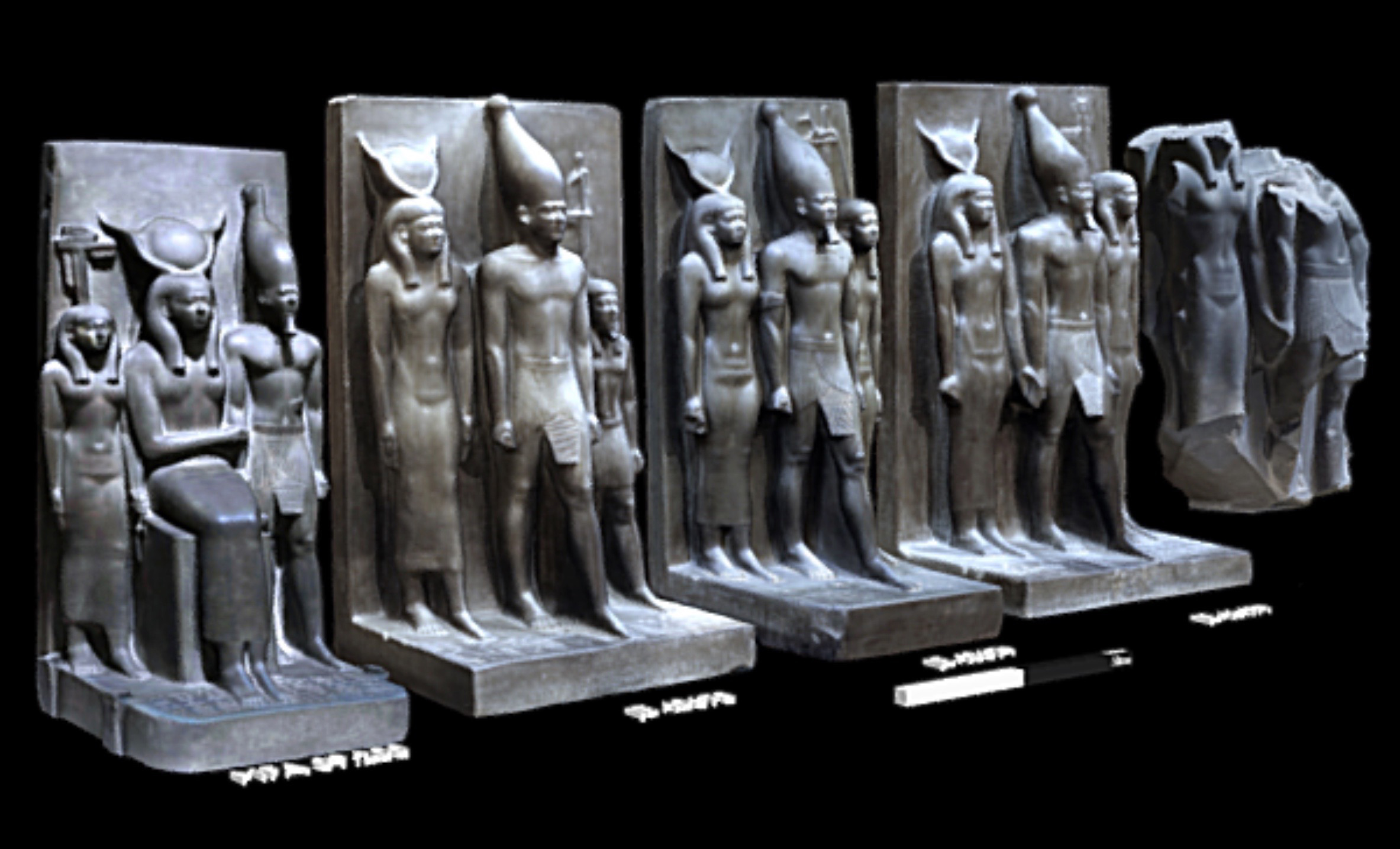- EraModern
- Project DirectorPeter Der Manuelian
- LocationGiza Plateau
- AffiliationHarvard University
- Project Dates2000-Present
The Giza Project, a non-profit international initiative based at Harvard University, assembles information about all the archaeological activity at the most famous site in the world: the Giza Pyramids and surrounding cemeteries and settlements (third millennium BCE to present). Using digital archaeology, the Project unites diverse documentation to produce powerful online and traditional academic research tools and new teaching technologies. It presents academic information about Giza at all levels of expertise for the world community and strives to provide a model of archaeological information management.
Some of the many Giza Project offices, staff members, and students, at both the Museum of Fine Arts, Boston (2000–2010) and Harvard University (2011– present). Photo: Peter Der Manuelian.
The mission statement above describes a project that began back in 2000 at the Museum of Fine Arts, Boston, with generous support from the Andrew W. Mellon Foundation. Rather than simply scan all 45,000 glass plate expedition negatives from George Reisner’s Harvard University–Boston Museum of Fine Arts Expedition (1905–1947), we decided instead to focus on “just” the 21,000 Giza photos, but link them intelligently with as much additional metadata as possible. Assembling a team of Egyptologists, PhD candidates, undergraduates, volunteers, and talented and dedicated MFA Museum Associates women, we transcribed expedition diaries, created artifact databases from original object register books, scanned maps, plans, sections, and epigraphic drawings of scenes and inscriptions, and converted scholarly publications into a massive Giza digital library of text-searchable pdf files. Everything fit into its appropriate module in our TMS collections management system, now dubbed “GizaCARD,” and the Project’s first website launched in 2005. Each of the hundreds of Giza tombs surrounding the Pyramids became a central “node” in our system, linked to its appropriate photos, diary pages, object records, drawings, publications, etc.
Since focusing only on the parts of the Giza Necropolis excavated by the HU–MFA Expedition precluded any holistic attempt to study the entire site, we next brought on board all the museums and institutions with a direct archaeological connection to Giza. We have added digital data from Berkeley, Berlin, Cairo, Hildesheim, Leipzig, Philadelphia, Turin, and Vienna in an attempt to build “Giza International,” a sort of centralized repository. We also discovered in Egypt some seventy-four Arabic expedition diaries kept safely all these years by the descendants of George Reisner’s Egyptian foremen. Mellon Foundation funding totaled about $3.4 million and supported us from 2000 to 2010.
Scan of HU–MFA Expedition Arabic Diary page, from seventy-four books retrieved from Egypt in 2006. Forty of the books covered the Giza excavations.
Aiming to take our digital data to the next level, we teamed up with French 3D modeling company Dassault Systèmes (Paris and Waltham, MA) and immersive experience and virtual/augmented reality partner Emissive (Paris) to build 3D models of Giza for teaching and research. Breathing new life into old data came in particularly handy in 2010 when the Giza Project moved to Harvard University. Like George Reisner himself (1867–1942), who was also an MFA curator and Harvard professor, the Giza Project was now able to represent both institutions in a collaborative partnership. The work also fed directly into undergraduate and graduate courses taught in Harvard’s customized Visualization Lab classroom.
Students in Anthropology 1250 (“The Giza Pyramids: Archaeology, History, Technology”) in Harvard’s Visualization lab classroom, fall 2019. Photo: Peter Der Manuelian.
Supported by a series of NEH grants, the Giza Project at Harvard roughly doubled the number of records online over what had been collected at the MFA. We expanded into “educational telepresence,” building out 3D models, not only for our new Harvard-based website, but for immersive stereo headset use as well. The Project’s outreach expanded as well, and a HarvardX online “Giza Pyramids” course (8 modules, 60 videos) has reached a total enrollment at this writing of 116,639 learners from 160 countries. Some of our work overlapped with the mission of the Harvard Museum of the Ancient Near East, such as the free “Dreaming the Sphinx” augmented reality app for the Thutmose IV Sphinx Stela we launched on the Apple App and Google Play stores.
Worldwide press for the Giza Project.
From 2018 onwards, the Giza Project teamed up with Zhejiang University (ZJU) in Hangzhou. Visiting computer scientist Dr. Changyu Diao joined us for a year, contributing to a wide variety of projects, including back-end web coding, live-streaming our Giza classes to China, and 3D scanning and 3D printing, the last item thanks to several PLA printers generously donated by Sindoh.
Now just over twenty years on, with 152,464 items at present in our “GizaCARD” database and on our website, we have recently been enhancing the website (figure 6), with a IIIF-compliant “Mirador” image viewer; the ability to save and share collections (“MyGiza”); and educational features such as “Giza@School,” including an interactive timeline on Giza archaeological history. Through collaboration with ICONEM we hope to combine drone footage with our own interactive tours and a GIS overlay that will allow for enhanced research as well as edu-tourism. New sourcing documents will explain how we built our 3D structures, while photogrammetry and Sketchfab object models and virtual tours of Giza tomb chapels will enable a host of new scholarship opportunities.
Sketchfab Object Models.
A description of the first decade of the Giza Project was published in 2017 by Harvard University Press. Funding remains an ongoing challenge but with proper support we hope to continue to document the past, present, and future at Giza, one of the world’s most important heritage sites.
Credits:
- Nicholas Picardo, Project Supervisor and Research Associate
- Luke Hollis, Lead Technical Artist
Project Team Members:
After twenty years, the Giza Project has benefited from the work of almost 1,000 different people. Among those with fundamental contributions are Diane Flores, Catherine Pate, Nicholas Picardo, Rachel Aronin, Jeremy Kisala, Luke Hollis, Rus Gant, David Hopkins, Josh Widdicombe, Changyu Diao, and Harvard Egyptology and archaeology PhD candidates Laura Taronas, Kate Rose, Sara Zaia, Inês Torres, Hilo Sugita, Julia Puglisi, Sergio Alarcón Robledo, Nisha Kumar, and Gaia Bencini. We also thank Rashmi Singhal and Cole Crawford of DARTH, Jeff Steward (HAM), and Henry Perkins and the staff of Harvard’s FAS Research Computing. We also thank volunteers John Thompson, Doug Hall, Erika Kelley, Jenny Cashman, Daniel Leon, and Maarten Praet.
The Giza Project brings together archival holdings from a number of institutions, including:
- The Museum of Fine Arts, Boston (USA)
- The Ägyptisches Museum der Universität Leipzig (Germany)
- The Berlin Ägyptisches Museum (Germany)
- The Egyptian Museum, Cairo (Egypt)
- The Grand Egyptian Museum (Egypt)
- The Kunsthistorisches Museum, Vienna (Austria)
- The Museo Egizio, Turin (Italy)
- The Peabody Museum of Archaeology and Ethnology, Harvard University (USA)
- The Phoebe A. Hearst Museum of Anthropology, University of California, Berkeley (USA)
- The Roemer- und Pelizaeus-Museum, Hildesheim (Germany)
- The University of Pennsylvania Museum of Archaeology and Anthropology, Philadelphia (USA)
- Ancient Egypt Research Associates
The Giza Project gratefully acknowledges current and past support from the following organizations:




